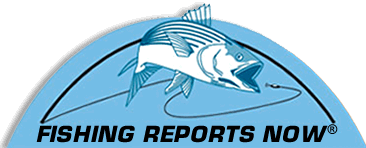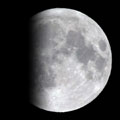Catch Slightly Fewer Fish Last Year
From the National Oceanic Atmospheric Association
Fisheries Service:
Recreational Catch Down Slightly,
Remains Second Highest Catch in Decade
July 17, 2008
Marine recreational anglers caught more than 468 million fish in 2007, down slightly from last year’s historic high of 475 million fish, but still the second highest recreational catch total in the last ten years.
The overall number of fish caught and kept also declined slightly, from 214 million to196 million fish, according to NOAA’s Fisheries Service.
The 2007 data demonstrates a widespread turn toward “catch and release” among recreational anglers. While anglers are catching about 27 percent more fish than a decade ago, they are also releasing more fish than they keep. Of the 468 million fish caught by anglers in 2007, 272 million or 58 percent were released alive. The percentage of fish released into the environment has increased steadily from about 51 percent in 1993.
Spotted seatrout was the most popular catch among marine recreational anglers. The species is caught in the Gulf of Mexico and the south Atlantic regions, which have the highest combined concentration of saltwater anglers in the nation. The top catches in other regions were lane snapper (Caribbean), striped bass (North Atlantic), Atlantic croaker (Mid-Atlantic), chub mackerel (Pacific), black rockfish (Pacific Northwest), and bigeye scad (Western Pacific).
“We rely on data from both the recreational and commercial fishing communities to ensure we’re making informed conservation decisions,” said Jim Balsiger, acting NOAA assistant administrator for NOAA’s Fisheries Service. “As we move towards an ecosystem approach to managing fisheries, the need for timely and accurate data on recreational fishing has never been greater.”
Recreational fishing continues to be one of the most popular outdoor sports. Participation rates remain largely unchanged from previous years. Anglers took 86.7 million saltwater trips in 2007, a slight 1.2 percent increase over the previous year, according to the NOAA report.
These statistics are compiled by NOAA’s Fisheries Service from in-person and telephone interviews with recreational fishermen. Currently, the agency is engaged in a joint state-federal initiative to redesign its surveys to provide a more complete picture of saltwater anglers’ catch and effort and improve the conservation of our shared ocean resources.
NOAA’s Fisheries Service is currently accepting public comments until Aug. 11 on the rule to create a National Saltwater Angler Registry, a major part of this initiative to improve surveys. The registry will list anglers who fish in federal ocean waters or for anadromous species such as striped bass, shad and herring that spawn in fresh water and spend part of their lives in the ocean. The registry also will help NOAA do more complete angler surveys and also help demonstrate the economic benefits of recreational fishing on national and local economies. Public comments on the proposed registry can be submitted until Aug. 11 electronically. Comments may also be mailed to:
John Boreman
Director, Office of Science and Technology
NMFS
1315 East-West Highway
Silver Spring MD 20910
Attn.: Gordon Colvin
The data released today on recreational fishing is part of Fisheries of the United States 2007, a detailed annual report on the nation’s commercial and recreational fishing, landings, import, export, per capita fish consumption and consumer expenditures for fish products. The report will be on the Web on Friday.
NOAA is dedicated to enhancing economic security and national safety through the prediction and research of weather and climate-related events and information service delivery for transportation, and by providing environmental stewardship of our nation's coastal and marine resources. Through the emerging Global Earth Observation System of Systems (GEOSS), NOAA is working with its federal partners, more than 70 countries and the European Commission to develop a global monitoring network that is as integrated as the planet it observes, predicts and protects.





